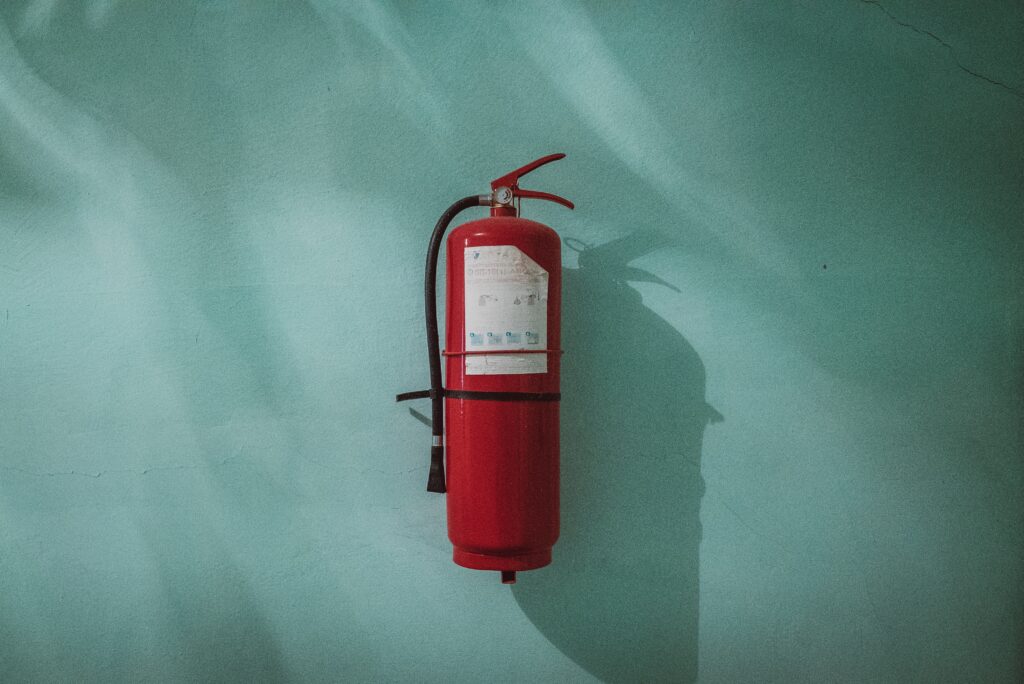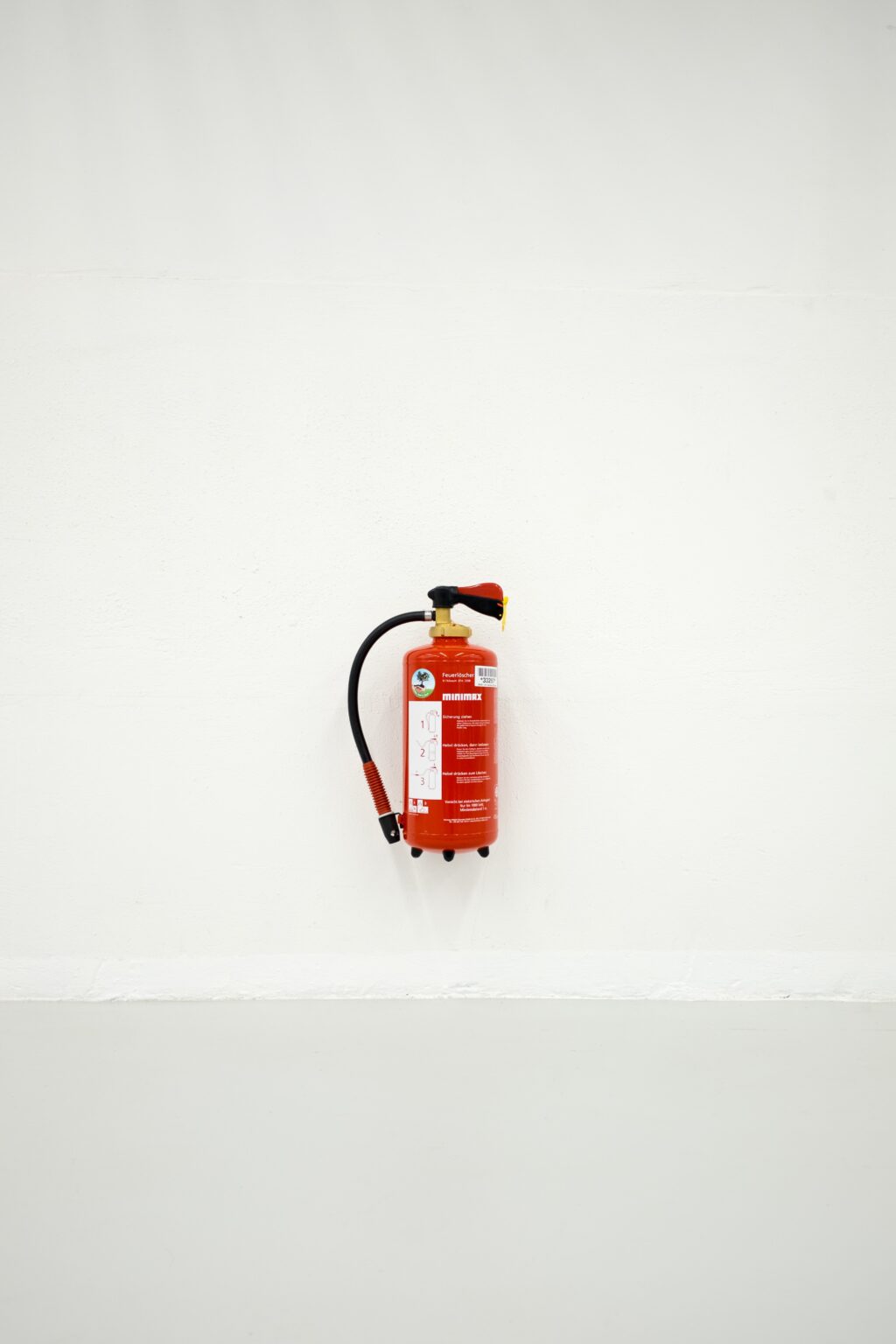The unexpected can happen anytime, so being prepared is paramount, especially regarding fire safety. The right tools and equipment can make a crucial difference in preventing, detecting, and mitigating the impact of a fire.
In this comprehensive guide, we will explore essential fire safety equipment, providing valuable insights to help you make informed decisions and ensure the safety of your premises.
It is equally important to keep equipment up to date to maintain its effectiveness and readiness for any potential fire emergency.
IMAGE: UNSPLASH
Fire Extinguishers: The First Line Of Defense
Fire extinguishers are the most recognizable and widely used fire safety tools. However, choosing the right type of extinguisher for your specific needs is crucial. There are several classes of fire extinguishers, each designed to combat different types of fires.
- Class A extinguishers are suitable for ordinary combustibles like wood and paper.
- Class B extinguishers are designed for flammable liquids like gasoline or oil.
- Class C extinguishers are meant for electrical fires.
- Class D extinguishers are designed for flammable metals.
- Class K extinguishers are specifically for kitchen fires involving cooking oils and fats.
When selecting a fire extinguisher, consider the potential fire risks in your environment and ensure that the chosen type of extinguisher is appropriately rated for those hazards.
Smoke Alarms: Early Detection Saves Lives
Smoke alarms are indispensable for early fire detection, providing a crucial warning and allowing occupants to evacuate promptly. Modern smoke alarms come with various features, including battery-powered, hardwired, or interconnected systems. Some advanced models even include carbon monoxide detection capabilities.
When choosing a smoke alarm, consider factors such as the size and layout of the space, power source preferences, and any additional features that align with your safety requirements. Regular maintenance, including testing and replacing batteries, is essential to ensure the reliability of smoke alarms.
Fire Blankets: Swift Suppression For Small Fires
Fire blankets are versatile tools designed to smother small fires, particularly those involving flammable liquids or cooking oils. These blankets are made from flame-resistant materials and effectively contain and suppress flames by cutting off the fire’s oxygen supply.
When selecting a fire blanket, ensure it meets safety standards and has the appropriate size for potential fire scenarios. Familiarize yourself with the proper usage techniques, as timely deployment can prevent a small incident from escalating into a larger emergency.
Emergency Exit Signs And Lighting: Guiding The Way To Safety
During a fire emergency, visibility can be severely compromised by smoke and darkness. Emergency exit signs and lighting are crucial in guiding occupants to safety. Ensure that exit signs are strategically placed, easily visible, and comply with local building codes.
Emergency lighting, including battery-powered or generator-backed systems, ensures that exit paths remain illuminated even during power outages. Regular testing and maintenance of these systems are essential to guarantee their functionality when needed.
Fire Hose Reels And Cabinets: Industrial-strength Fire Suppression
In larger commercial or industrial settings, fire hose reels and cabinets are essential items in a fire safety toolkit. These systems provide a ready water source for trained personnel to combat fires before they escalate.
When selecting fire hose reels and cabinets, consider water pressure, hose length, and accessibility. Routine inspections and maintenance are critical to ensuring these systems remain in optimal working condition.
Fire-Resistant Safes: Protecting Valuables In The Face Of Fire
Fire-resistant safes protect critical documents, digital media, and valuable items for homes and businesses. These safes are designed to withstand high temperatures, protecting their contents from fire damage.
When choosing a fire-resistant safe, consider the duration of fire resistance, the type of items you intend to protect, and any additional security features. Ensure that the safe is appropriately rated for the potential fire risks in your environment.
Fire Safety – Conclusion
As we navigate the intricacies of fire safety equipment, it becomes clear that a thoughtful and informed approach is essential for effective protection. The right tools can differentiate between a minor incident and a major catastrophe.
By understanding the specific needs of your environment and selecting tools that align with those needs, you can create a robust fire safety plan that safeguards lives and property.
Regular maintenance, training, and staying informed about the latest advancements in fire safety technology will further enhance the effectiveness of your overall fire safety strategy.
IMAGE: UNSPLASH
If you are interested in even more lifestyle-related articles and information from us here at Bit Rebels, then we have a lot to choose from.


COMMENTS